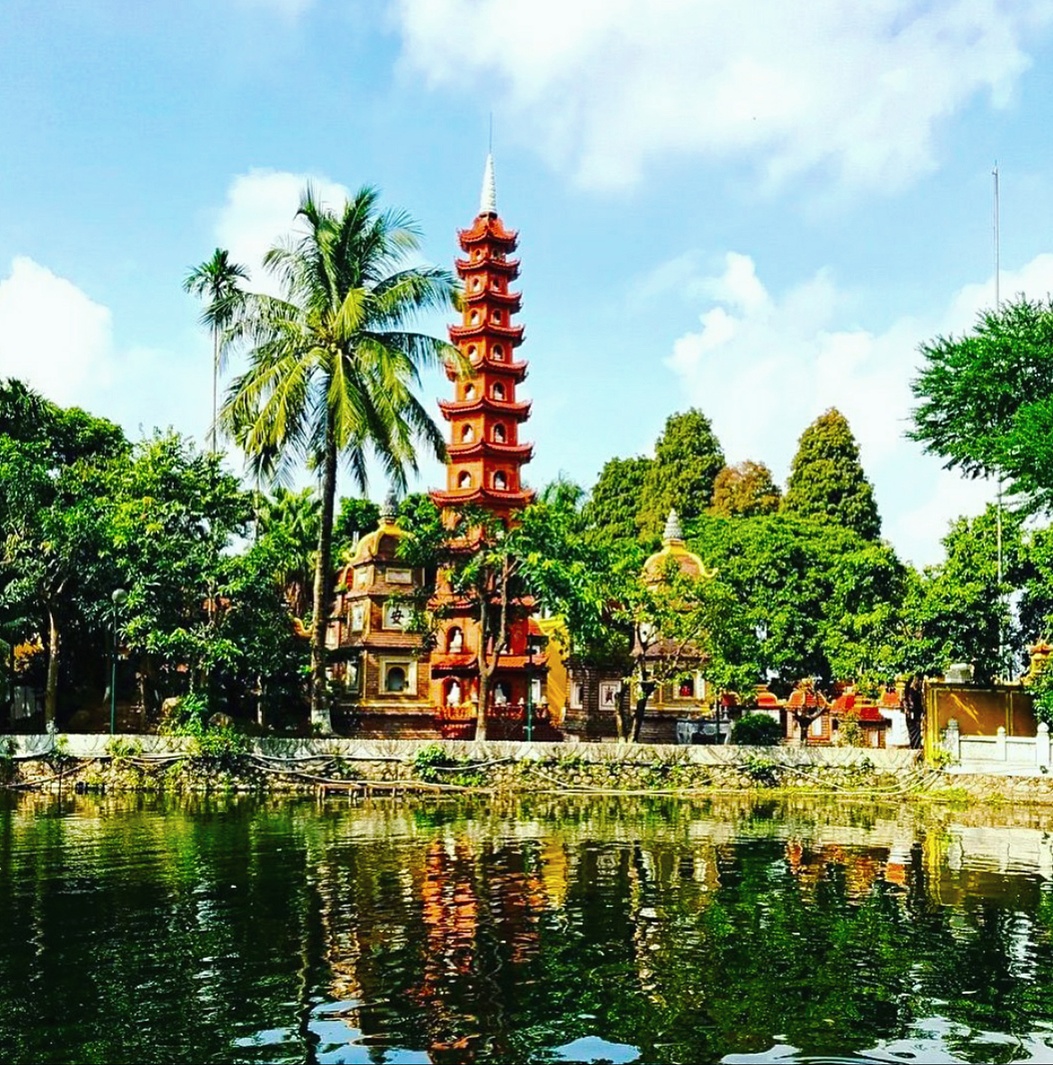TRAN QUOC PAGODA (North Vietnam): The oldest pagoda in Hanoi, a striking symbol of the Vietnamese Buddhism
Being one of the most spiritual pagodas in Vietnam, Tran Quoc Pagoda is a renowned attraction for its deep cultural and Buddhist values. Coming to Tran Quoc Pagoda, the oldest pagoda in Hanoi (over 1500 years old), you will enjoy a delightful and antiquated picturesqueness in the center of the crowded and fast-pacing city.
Built in the sixth century during the reign of King Ly Nam De, the pagoda was first named Khai Quoc, which means “founding the country”. Since then it has undergone a move, refurbishment and numerous name changes, but it remains a serene place to visit.
It was first constructed on the other side of the dyke road, by the river, but was moved in the 17th century to its current location on West Lake. Clearly the builders recognised what a prime piece of real estate Duong Thanh Nien was and that the lakeside location would add to the beauty to the pagoda.
The Buddhist pagoda is accessed via a short causeway lined with palm trees. The causeway leading to the temple gives a sense of drama as you approach, suggesting something of value lies ahead. The large entrance gate is one of the most recent additions, built in 1815, and through that to the left is a tall tower visible from the street. Entrance is free to the temple, but donations are encouraged.
The tower stands 15 metres high and has 11 tiers, each designed to represent the petals of a lotus flower. Each level has six arch windows containing a statue of Amitabha and on top of the tower sits a lotus flower made from precious stone—but you can’t get a good view of that from 15 metres below.
Brick-built shrines of all shapes and sizes surround the tower, most with incense wafting out from small windows or altars, and some with Chinese writing on the side; we can’t tell you the meaning of these texts, but they are pretty.



Comments
Post a Comment